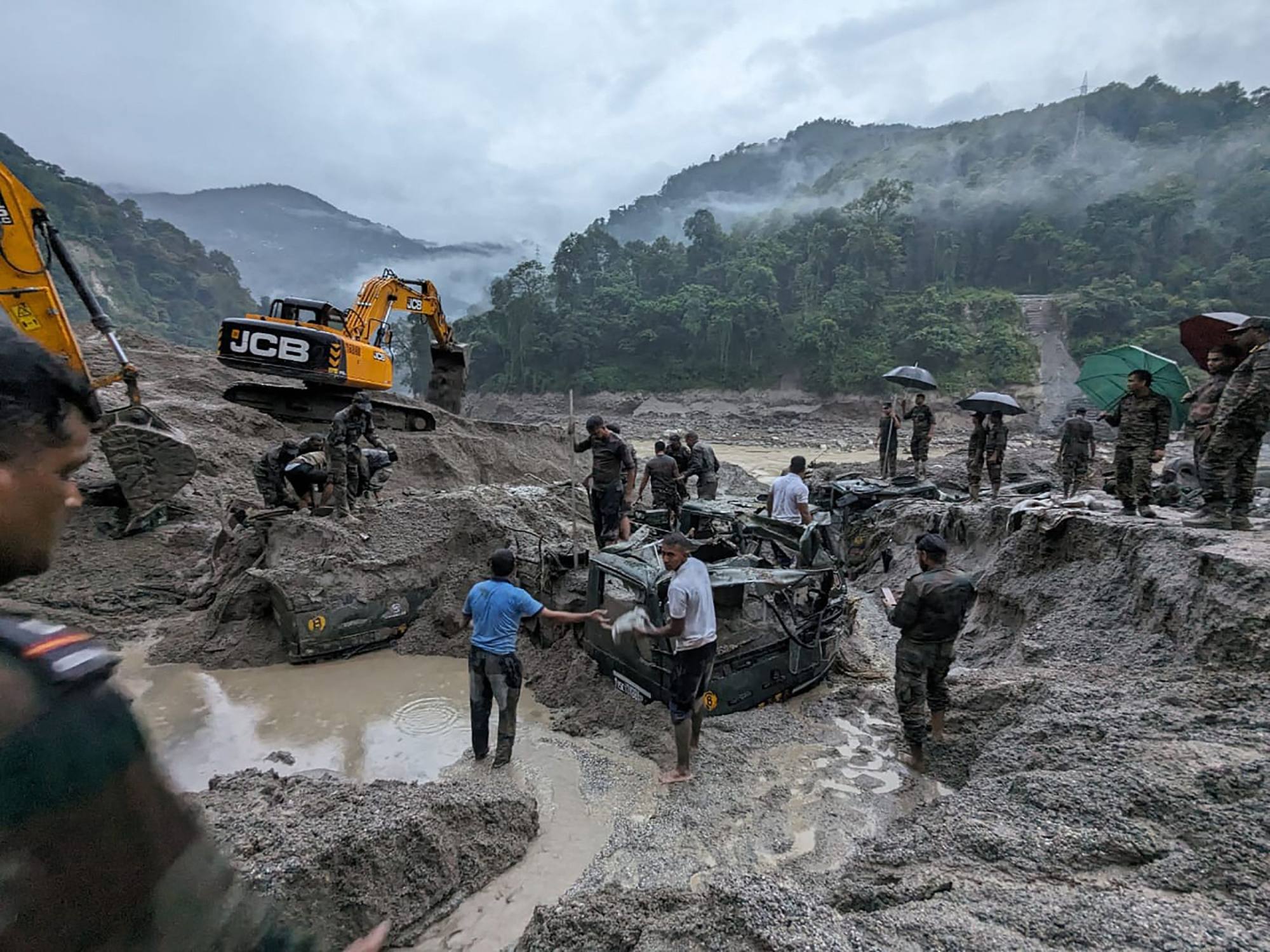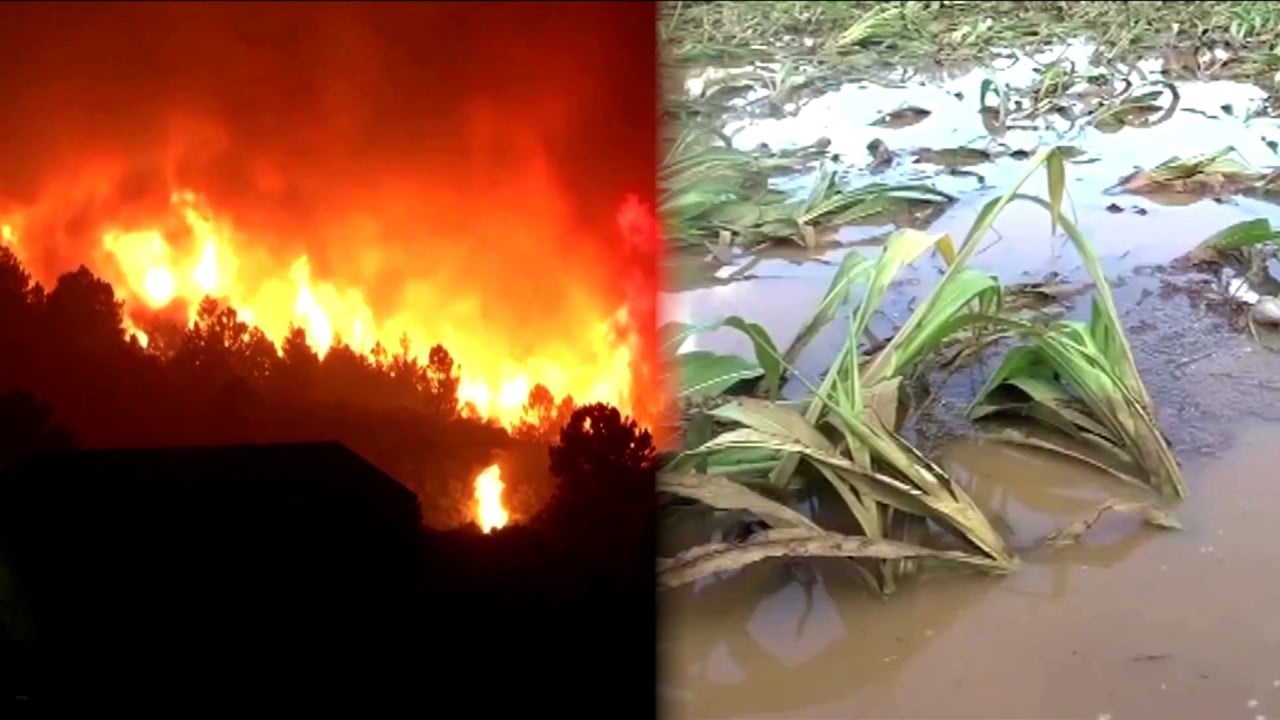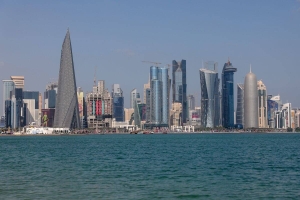Indian Himalayan glacial lake flooding kills at least 14, with 102 others missing

[ad_1]
At least 14 people were killed and 102 were missing on Thursday after heavy rains caused a Himalayan glacial lake in northeast India to burst its banks, the worst such disaster in the region in more than five decades.
The Lhonak Lake in Sikkim state burst its banks on Wednesday causing major flooding, which authorities said had impacted the lives of 22,000 people. It is the latest deadly weather event in South Asia’s mountains being blamed on climate change.
The weather department said Sikkim received 101mm (4 inches) of rain in the first five days of October, more than double normal levels, triggering floods worse than one in October 1968 in which an estimated 1,000 people were killed.
The department has predicted heavy rain over the next three days in parts of Sikkim and neighbouring states.
The latest flooding was exacerbated by water released from state-run NHPC’s Teesta V dam, local officials said. Four of the dam’s gates had been washed away and it was not clear why they had not been opened in time, a government source told Reuters.
Flash flood washes away 23 Indian soldiers in mountainous Sikkim
Flash flood washes away 23 Indian soldiers in mountainous Sikkim
As of early on Thursday, the state disaster management agency said 26 people had been injured and 102 were missing, 22 of whom were army personnel. Eleven bridges had been washed away, hampering rescue operations which were already affected by heavy rainfall.
Authorities in neighbouring Bangladesh were on alert with a state-run water development board official warning that five districts in the northern part of the country could be inundated with a rise in the level of the Teesta river, which enters Bangladesh downstream of Sikkim.
Rescuers were battling to help those hit by the flood, with communications cut across large areas and roads blocked.
“Floodwaters have caused havoc in four districts of the state, sweeping away people, roads, bridges,” Himanshu Tiwari, an Indian Army spokesman said.

The army was working to reestablish telephone connections and provide “medical aid to tourists and locals stranded”, it said in a statement.
Water powered downstream, adding to a river already swollen by monsoon rains, damaging a dam, sweeping away houses and bridges, and causing “serious destruction”, the Sikkim state government said.
Crocodiles ‘escort’ dog to safety in India, stunning scientists
Crocodiles ‘escort’ dog to safety in India, stunning scientists
Lhonak Lake shrunk by nearly two-thirds, an area roughly equivalent to about 150 football pitches (105 hectares), satellite photographs released by the Indian Space Research Organisation showed.
“Intense rain has led to this catastrophic situation in Sikkim where the rain has triggered a glacial lake outburst flood and damaged a dam, and caused loss of life,” said Miriam Jackson, a scientist specialising in ice who monitors Himalayan regions with the Nepal-based ICIMOD.
“We observe that such extreme events increase in frequency as the climate continues to warm and takes us into unknown territory.”
Earth’s average surface temperature has risen nearly 1.2 degrees Celsius since pre-industrial times but high-mountain regions around the world have warmed at twice that pace, climate scientists say.
Sikkim, a small state of about 650,000 people which is wedged in the mountains between Nepal, Bhutan and China, was cut off from Siliguri in the neighbouring state of West Bengal as the main highway had collapsed.
[ad_2]
Source link






